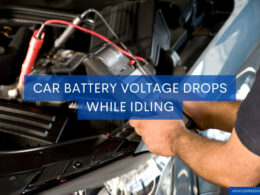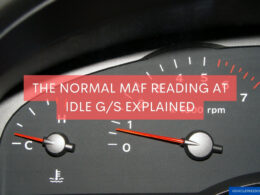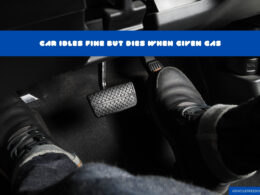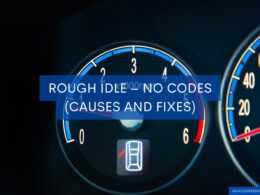In This Article Show
As an experienced mechanic with over 13 years of expertise, I’ve seen various issues that can affect a vehicle’s performance and comfort. One common yet often overlooked problem is when a car vibrates while idle.
While this might seem like a minor inconvenience at first, if left unaddressed, it could point to underlying issues that could lead to more serious, and often more expensive, problems down the line.
These vibrations are not just annoying; they can also be the tell-tale sign of your vehicle trying to communicate something crucial to you. Understanding the causes of these vibrations and how to fix them can enhance your vehicle’s longevity and provide you with a smoother, more enjoyable driving experience.
In this guide, I will share my professional insight into why your car might vibrate when idle, how to diagnose the issue, and, most importantly, how to fix it. Lets get into it.
Understanding Your Car’s Vibrations
Vibrations in a vehicle can be a common occurrence. However, identifying their nature, and what they could potentially signal, can provide vital insights into your car’s health. Here’s what you need to know about vibrations and why they might be more noticeable when your car is idle.

1. Types of Vibrations
Engine Vibrations
The engine is the heart of the vehicle, and its smooth operation is critical. Vibrations can occur due to engine misfires, worn out spark plugs, or an imbalance in the air/fuel mixture.
Drivetrain Vibrations
The drivetrain includes the components that transfer power from the engine to the wheels – the transmission, driveshaft, axles, and wheels. Any imbalance or damage in these components can lead to vibrations.
Brake-Related Vibrations
These vibrations can be felt when the brake pedal is applied. Warped rotors or uneven brake pad wear can cause such vibrations.
Tire-Related Vibrations
Uneven tire wear, unbalanced tires, or damaged wheels can cause your vehicle to vibrate. These are often felt through the steering wheel.
Why Vibrations Might Be More Noticeable When Idle
Vibrations can be more noticeable when a car is idle due to several reasons.
Firstly, when the car is in motion, the vibrations may be absorbed by the vehicle’s movement or dampened by the vehicle’s suspension system. However, when the car is at a standstill, these vibrations have nowhere to go, and so, they become more noticeable.
Additionally, the idle speed of a vehicle is lower than the driving speed, which can cause certain components, like motor mounts or the exhaust system, to vibrate more noticeably.
It’s important to remember that while some vibrations are normal and expected in a vehicle’s operation, excessive or new vibrations should be taken seriously, as they may signal a deeper issue with your vehicle.
Common Causes of Car Vibrations When Idle
When your car vibrates while idling, it can feel concerning. Often, these vibrations may signal an underlying issue that needs your attention. Understanding the potential causes can help you diagnose the problem more accurately and address it effectively. Here are some of the common culprits:
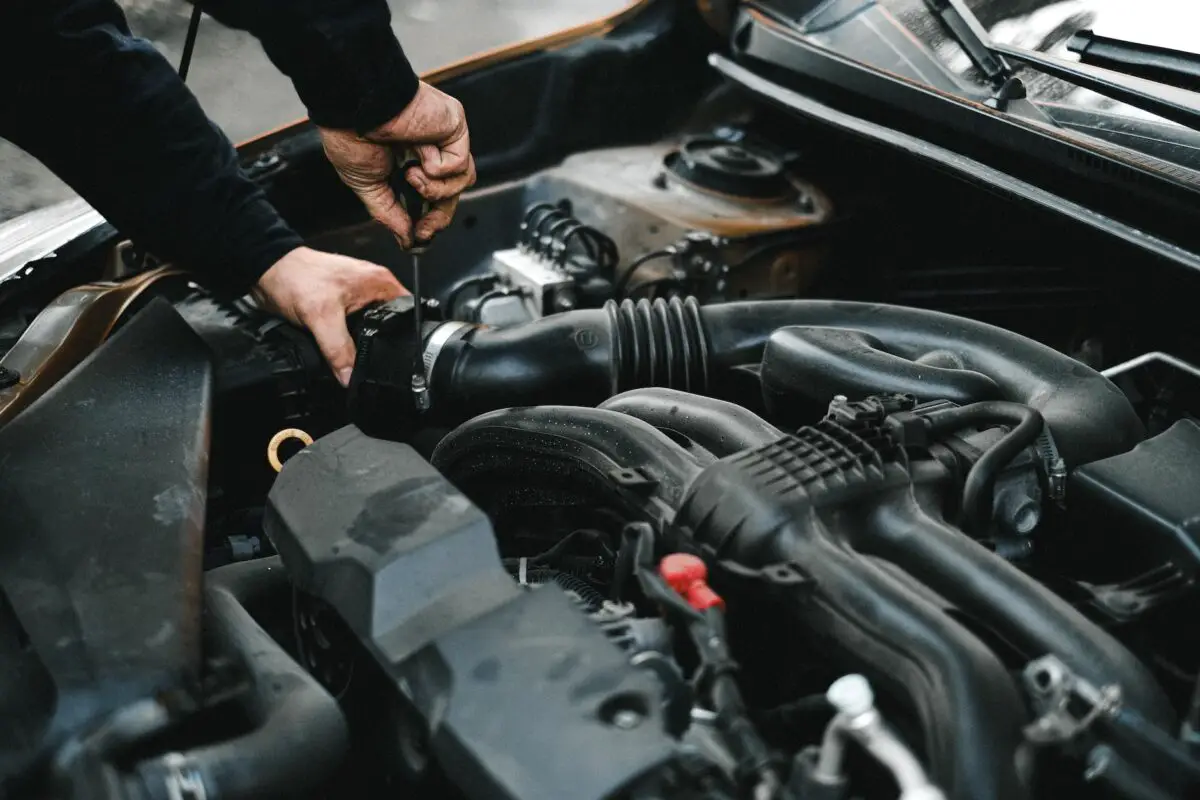
1. Engine Problems
Engine problems are one of the leading causes of car vibrations when idle. Misfires, uneven fuel combustion, worn-out spark plugs, and issues with the timing belt can all lead to engine vibrations.
2. Exhaust System Issues
The exhaust system removes and filters the gases produced during the combustion process. Damage or blockages in the exhaust pipes can cause these gases to build up, leading to vibrations that become especially noticeable when your vehicle is idling.
3. Unbalanced or Misaligned Tires
Unbalanced or misaligned tires can cause your car to vibrate at certain speeds or even when idle. This is due to the uneven weight distribution around the car, which results in an inconsistent contact patch with the road.
4. Brake System Problems
Although brake-related vibrations are usually most noticeable when applying the brakes, issues like warped rotors or worn-out brake pads can also cause vibrations when the car is idle.
5. Faulty or Damaged Motor Mounts
The motor mounts keep your car’s engine secured to the car’s frame, reducing the noise and vibrations produced during operation. Over time, these mounts can wear out or become damaged, causing the engine to vibrate excessively, particularly when the vehicle is at a standstill.
How to Diagnose Vibrations When Idle
If your vehicle vibrates when idle, diagnosing the cause is the first step towards fixing the issue. Here’s a step-by-step guide to help you pinpoint the source of the problem:
1. Check the Engine
Start with the engine, as it’s a common source of vibrations. Check the condition of your spark plugs, fuel injectors, and air intake system. Look for any signs of damage or excessive wear and tear.
2. Inspect the Exhaust System
Check your exhaust system for leaks, blockages, or damage. A damaged exhaust pipe, muffler, or an obstructed exhaust system can cause your vehicle to vibrate.
3. Examine the Tires
Inspect your tires for any signs of uneven wear or damage. Additionally, you can check if your tires are balanced by spinning your car and seeing if the vibration increases with speed.
4. Assess the Brake System
While brake vibrations are typically more noticeable when braking, a warped rotor or worn-out brake pads could also contribute to your car’s idle vibrations. Check your brakes for any signs of wear or damage.
5. Evaluate the Motor Mounts
Motor mounts can deteriorate over time, leading to increased engine vibrations. While this can be a bit more challenging to check, look for excessive movement in the engine while idling or a clunking noise when shifting gears, as these can be indicative of a motor mount issue.
If you’re unable to identify the source of the vibrations yourself, consider taking your vehicle to a professional mechanic. Some issues, such as internal engine problems or transmission issues, may require specialized tools or knowledge to diagnose accurately.
How to Fix Vibrations When Idle
After diagnosing the cause of your car’s idle vibrations, the next step is rectifying the problem. While some fixes may require professional assistance, there are others that you can tackle yourself. Here’s a step-by-step guide to addressing these common issues:
1. Fixing Engine Problems
For misfires or issues with the fuel/air mix, you might need to replace the spark plugs or fuel injectors. Timing belt issues often require professional help, as improper installation can lead to severe engine damage.
2. Repairing Exhaust System Issues
Exhaust issues, like leaks or blockages, should be addressed as soon as possible. Small leaks can be patched, but larger ones, or issues with the catalytic converter, will likely require part replacement.
3. Addressing Tire Imbalance or Misalignment
For tire-related issues, a simple balance and alignment might do the trick. If your tires are worn unevenly, you may need to replace them. Regular rotation can help prevent this issue in the future.
4. Resolving Brake System Problems
Brake problems can be as simple to fix as replacing your brake pads. However, issues like warped rotors might require professional service. Always prioritize fixing brake problems immediately to ensure your safety on the road.
5. Replacing Motor Mounts
If your motor mounts are worn out or damaged, you will need to replace them. This job can be a bit challenging for a DIY-er and may require professional assistance.
Remember, don’t hesitate to take your car to a professional if you’re not confident in tackling these fixes yourself or if the problem lies in a complex system like the engine or transmission.
The cost of a mechanic’s service is often well worth preventing further damage to your vehicle.
Preventive Measures to Avoid Car Vibrations When Idle
Preventive measures are key in maintaining a smooth and comfortable ride, free from idle vibrations.
By keeping up with regular maintenance tasks and paying attention to your vehicle’s performance, you can often catch and fix issues before they become significant problems. Here are some measures to consider:
1. Regular Engine Check-Ups
Ensure your engine is regularly serviced and checked for issues. This includes regular oil changes, filter replacements, and keeping an eye on the condition of your spark plugs and fuel injectors.
2. Maintain Your Exhaust System
Regularly inspect your exhaust system for any signs of damage or wear and tear. A well-maintained exhaust system prevents vibrations and helps your vehicle run more efficiently.
3. Keep Tires Balanced and Aligned
Regular tire rotation, balance, and alignment can help prevent vibrations caused by uneven tire wear or unbalanced tires. Keeping your tires properly inflated also contributes to smooth, vibration-free driving.
4. Regularly Check Your Brake System
Regular brake inspections are crucial. Replacing brake pads before they completely wear out can prevent damage to your brake rotors and avoid vibrations caused by brake system issues.
5. Monitor the Condition of Your Motor Mounts
While motor mounts don’t require frequent replacement, keeping an eye on their condition can help you catch any issues early. If you notice increased engine noise or movement, it might be time for a replacement.
Adhering to these preventive measures can minimize the chances of your car vibrating when idle. Always address any new or unusual car vibrations promptly to prevent further damage and ensure a safe driving experience.
Frequently Asked Questions about Car Vibrations When Idle
Why does my car only vibrate when idle?
Cars vibrate when idle due to a variety of issues, including engine problems, exhaust system issues, brake system issues, tire misalignment, or faulty motor mounts. It’s best to diagnose the problem with the steps provided in this guide or by consulting a professional mechanic.
Can I drive my car if it vibrates when idle?
While some causes of car vibrations aren’t immediately damaging, prolonged driving with these symptoms can exacerbate the underlying problem and lead to more costly repairs. If your car vibrates when idle, it’s best to diagnose and address the issue as soon as possible.
How much will it cost to fix my car if it’s vibrating when idle?
The cost of fixing a vibrating car depends largely on the underlying issue. For example, replacing spark plugs or balancing tires can be relatively inexpensive, while engine repairs or replacing motor mounts can be more costly. Always get a quote from a mechanic before proceeding with repairs.
Is it normal for my car to vibrate a little when idle?
While it’s normal for a car to have a slight vibration due to the operation of the engine, noticeable or excessive vibration is usually a sign of an underlying issue that needs to be addressed.
Can regular maintenance prevent my car from vibrating when idle?
Yes, regular maintenance is key to preventing most car issues, including vibrations when idle. Keeping up with regular oil changes, tire rotation, and engine check-ups can help maintain your car’s health and prevent problems before they start.
This guide should provide you with a comprehensive understanding of why your car may vibrate when idle, how to diagnose the issue, potential fixes, preventive measures, and answers to common questions.
Always remember that when in doubt, consulting a professional mechanic is the best course of action to ensure your vehicle’s longevity and your safety on the road.







